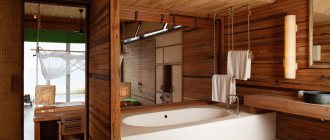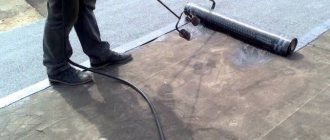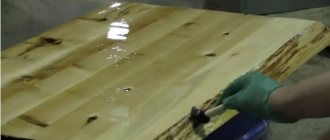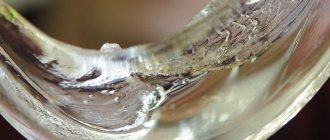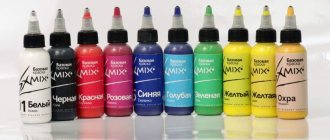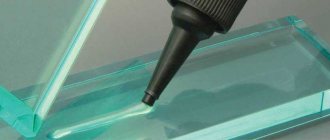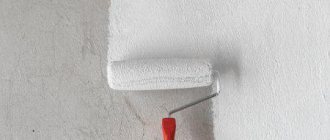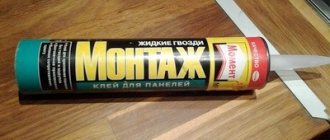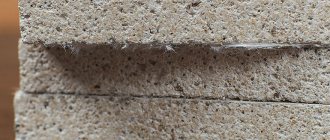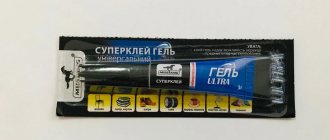What it is?
Liquid glass was obtained not so long ago, only 2 centuries ago.
It is unlikely that we will remember the name of the scientist and the formula of the resulting substance for a long time. It is only important for us to know that this is an aqueous solution of sodium, potassium or lithium silicates. Depending on the base, the properties of the resulting substance and the scope of its application change. The discovery was of great importance: the raw materials were inexpensive and found everywhere, the process of producing liquid glass turned out to be simple, and it found application in many industries.
Every person is familiar with ordinary glass. This material appeared more than 5000 years ago in Egypt. However, not every consumer is aware of what liquid glass is.
Another name for this composition is silicate glue. It consists of water and silicate salts. To produce such an adhesive mixture, the same components are used as in the production of glass products.
At the moment, there are several technologies for the production of liquid glass. The most popular of them is the effect of solutions on materials containing silica at constant temperatures.
No. 10. Waterproofing a well with liquid glass
Waterproofing work in this case is aimed at protecting the walls of the well from moisture, as well as treating the seams. It is very important that the concrete rings are very well fixed, otherwise no amount of waterproofing will save the structure from destruction. Additional fixation can be achieved using staples.
When the rings are mounted and they are secured, it is better to ensure that the seams are covered with linen or jute rope, pre-treated with liquid glass.
After this, you can begin processing the walls of the well. First, clean liquid glass is applied, and after it dries, a solution prepared on the basis of liquid glass and a cement-sand mixture is applied.
Peculiarities
Nowadays, the range of finishing materials is striking in its diversity. Thanks to a wide selection of different mixtures and compositions, craftsmen have the opportunity to carry out almost any repair work. Thus, one of the most popular and sought-after adhesives is liquid glass. Such products can be used for a variety of purposes. In addition, the use of high-quality liquid glass can extend the life of the building.
This high-tech silicate adhesive is produced on the basis of sodium, potassium or lithium. The last component is used the least often.
The main feature of liquid glass is that it can easily penetrate the structure of hard materials. At the same time, this adhesive composition gives up its moisture, increasing the degree of viscosity and density.
This composition is characterized by increased adhesive properties. It is also distinguished by thermal conductivity. Due to these features, this silicate adhesive is often used during thermal insulation work. The insulation, which was installed using liquid glass, can withstand record temperatures of up to 1200 degrees Celsius.
Liquid glass can improve the performance characteristics of other materials. For example, it is quite often mixed into concrete. This mixture can be used for the construction of various structures that will regularly come into contact with dampness and moisture.
Silicate adhesives are used not only for repair work. They can be purchased for laying various finishing materials, treating surfaces to provide additional fire safety, and also for polishing substrates that need it. It is worth noting that liquid glass has a special structure that can make any surface smooth and shiny.
Tips for choosing liquid glass
There are many manufacturers presenting their products in construction stores. In principle, there is practically no difference in the proposed compositions of liquid glass manufactured in factory conditions. And it’s difficult to single out any company—in fact, you can choose any option. However, you probably shouldn’t give preference to a product whose manufacturer is “embarrassed” to indicate its name and legal address. And this happens sometimes. It would be prudent to refrain from purchasing such products, even if they are attractive due to their low cost. In this case, there is no guarantee that this is not an ordinary counterfeit, which was made without adherence to technology and in violation of proportions. And ultimately, low-quality silicate glue will certainly negatively affect the result of the work.
Liquid glass is produced by many manufacturers. It’s difficult to single out someone, but you still shouldn’t purchase a completely “rootless” product.
As a rule, the cost of silicate solution is low. Wholesale sales start from 15 rubles per kilogram. Well, a three-kilogram bucket can be purchased for 100–110 rubles.
If sodium and potassium versions of liquid glass are available for sale, then the choice must be made depending on the use of the solution.
For example, potassium composition is most often used for waterproofing foundations, as it has a higher viscosity. Soda glass is more often used to process other structural objects.
If the silicate solution is sold in transparent packaging, it does not hurt to pay attention to its purity. There should be no heavy sediment, lumps or flakes. If such phenomena are noted, then it is better to refuse such a purchase - it is not difficult to find better quality products.
* * * * * * *
Now, having figured out how this inexpensive but quite effective material is used in construction, you can significantly reduce costs. For example, in some cases it would be quite reasonable to abandon more expensive compositions in favor of liquid glass.
Prices for liquid glass Tury
Tury liquid glass
True, not everything is completely clear-cut. They talk about this on construction forums and in comments to videos on YouTube. In particular, there are many statements that the waterproofing qualities of this material are still greatly exaggerated. It is possible that the truth is really somewhere in the middle. And the reason for possible failures could be a violation of the technology of using liquid glass.
To confirm this “discord”, watch the video posted below and read the comments to it.
Composition and properties of the material
The term “liquid glass” appeared due to the properties of a watery mixture when solidified to transform into a solid transparent substance. Its popularity is due to its adhesive and waterproof characteristics. The remedy was invented back in the Middle Ages. Its production is based on the reaction of silicic acid and alkaline compounds. The invention was patented only in 1818 by the German chemist-mineralogist Jan Nepomuk von Fuchs.
Liquid glass consists of a solution of sodium hydroxide and silica-containing elements
The classical composition of the substance has remained virtually unchanged centuries later. It contains silica-containing elements and sodium hydroxide solution, which can dissolve in water. That is why liquid glass is also called soluble glass. Externally, it is a colorless (sometimes with a greenish or yellow tint) transparent substance of varying consistency. The formula of liquid glass is a compound of alkali silicates and, accordingly, has the following form:
- Na2O(SiO2)n – sodium silicate;
- K2O(SiO2)n – potassium silicate.
To get an idea of what liquid glass is, just remember your school chemistry course. The numerical ratio of SiO2 molecules to Na2O or K2O molecules is called the silica module, which determines the solubility and a number of other properties of liquid glass. The n index indicates the number of silicon dioxide molecules.
The material is obtained by fusing quartz sand mixed with soda or sodium sulfate and coal. This happens in special glass melting furnaces that operate continuously. Technologically, the melting process is similar to the production of insoluble glass. Liquid glass is also produced by autoclave treatment of amorphous silica with high concentration caustic alkali.
The substance has waterproof and adhesive properties
Properties and advantages of the material
Externally, liquid glass resembles a viscous rubber mass, which, after hardening, creates a durable waterproof base.
The main properties of liquid glass are highlighted:
- water-repellent – prevents water penetration;
- antiseptic – protects against the formation of dangerous microorganisms and fungi;
- antistatic – prevents the formation of electrostatic discharge;
- fireproof – protects against fire and the negative effects of acid-containing components;
- hardening – provides increased strength and wear resistance of the treated base.
Such characteristics reveal a number of significant advantages of the material:
- quick filling of small cracks and pores, protection of wooden and concrete bases;
- creation of a durable moisture-proof film;
- low cost and economical consumption of material;
- long service life;
- possibility of carrying out work in rooms with high humidity levels.
The use of liquid glass requires compliance with special rules:
- Glass is not used for waterproofing brick foundations.
- To increase the strength of the glass film, it is necessary to use additional waterproofing options.
- The rapid hardening of the material requires experience and skills in working with it.
- Before starting work, the surface is thoroughly cleaned of debris and dust. After which it is treated with a deep penetration primer. Next, a primer is applied with liquid glass with an even distribution throughout the entire working area.
Characteristics and application of the material
The versatility of the product is due to the mass of functions that liquid glass performs in construction (and not only), in particular:
- repels moisture, eliminating the negative effects of water on building materials, thus acting as a hydrophobic insulator;
- destroys bacteria, fungi and mold, prevents their proliferation, being an excellent antiseptic;
- used to fill pores on various surfaces;
- neutralizes static electricity, acting as an antistatic agent;
- serves as a thermal insulator and ensures fire resistance of the material.
Important! Liquid glass is not recommended to be applied to brick, since the composition of the product has a destructive effect on the porous structure of the brick surface.
Liquid glass is an indispensable material in construction.
The wide range of applications of liquid glass and its functionality are due to a number of specific characteristics:
- ease of penetration of the material into microscopic cracks and pores, their complete filling, making it easy to apply to concrete and wooden surfaces;
- minimal material consumption and low cost compared to other waterproofing products;
- long service life, starting from five years;
- high moisture resistance;
- degree of protection depending on the number of layers of impregnation;
- the applied solution forms a highly reliable waterproofing layer.
Use of RC in construction
Due to its high adhesion, glass is increasingly used in the construction industry:
- For waterproofing basements, attics and foundations. It protects concrete from high humidity, ultraviolet radiation and fire.
- For waterproofing wells, wells and swimming pools. In places where the concrete surface comes into direct contact with water, the material provides reliable protection against destruction and deformation. The solution is applied in a thin layer in several stages to the inside of the walls of hydraulic structures.
- For laying heating equipment - fireplaces and stoves. The solution is prepared with the addition of refractory cement and sand.
- For the production of decorative materials - putties, water repellents, coloring and adhesive compositions.
- For the production of antiseptic compositions used in the treatment of concrete and wooden bases.
- For the production of protective solutions used in the treatment of connecting joints in sewer and water pipes.
- For the production of durable wood paints that are resistant to moisture and high temperatures.
Application of soda glass in construction
Padding
There are many options for using liquid glass in everyday life. For example, make a primer for a concrete screed. The applied layer will saturate the surface and increase its strength. To prepare it, you need to mix silicate and cement in a ratio of 1/1. First mix cement with water and add liquid glass at the end. Mix with a mixer and apply quickly, otherwise the mixture will harden.
Adviсe:
- The drying speed of liquid glass is 10 minutes, in solutions it takes several hours.
- If the solution hardens, add a small amount of water and mix with a mixer.
- If you plan to lay tiles, sodium silicate is diluted with water for priming.
- If you used clean liquid glass before applying the solutions, do not wait for it to dry completely. A hardened glassy film may prevent the applied compounds from bonding well.
Waterproofing solution
When protecting wells and tanks from waterproofing, it is worth trying, because moisture also comes from groundwater, outside the structure. To process such structures, you must first apply liquid glass to the entire surface. Then mix a solution of equal parts sand, cement and soda glass and apply a second layer.
Advice: when using reinforced concrete rings in the construction of a well, carefully treat the joints of the rings.
When added to concrete solutions for the purpose of waterproofing, mix liquid glass and concrete 1/10. This composition is used in basements for filling artificial reservoirs.
Floor coverings that are resistant to water can also be made using sodium silicate. We are preparing a cement-sand composition, which contains 2.5 times more sand. Add a mixture of liquid glass and water, where water is 85% and sodium silicate is 15%.
The filling of voids and cracks in the treated premises is carried out with a mixture of sand, cement and liquid glass 3/1/1.
Tip: in order to increase the strength and waterproofing properties, it is necessary to re-fill the outer surface of the floor with sodium silicate.
Kinds
At the moment, there are several varieties of high-quality liquid glass. Each of them is used for different purposes and has its own characteristic features.
Sodium
Soda glass is a highly viscous solution based on sodium salts. This material has excellent adhesion characteristics, as well as increased strength and durability. It can be applied to materials with very different structures. Sodium mixtures are not afraid of temperature changes. In addition, they are not subject to fire and are not deformed.
Sodium adhesive compositions have some characteristics.
- Such mixtures dry very quickly - within 10 minutes.
- If the material has hardened, you can add more water to it and stir it well so that it can be used again.
- Sodium liquid glass is a material that is quite often used when laying tiles. In this case, sodium silicate is diluted with water to make a high-quality primer.
- If, before laying the sodium composition, simple liquid glass was applied to the base, then you should not wait for it to dry - the hardened glassy film will interfere with sufficient adhesion of the materials.
Sodium adhesive compositions are used both in construction work and in everyday life, for example, for cleaning dishes, removing various stains or plumbing work.
Potassium
This type of silicate glue is based on potassium salts. The structure of this glue is quite loose. In addition, these mixtures are distinguished by high hygroscopicity. Surfaces coated with potassium liquid glass are not afraid of overheating and mechanical damage.
Such mixtures have the following properties:
- they create excellent adhesion;
- they are not afraid of temperature changes;
- a high-quality potassium composition can protect the base from aggressive chemicals;
- protects the base from the appearance of defects such as fungus and mold;
- significantly increases the abrasion resistance of the base;
- absorbs excess moisture quite easily, especially when comparing the potassium composition with the sodium one;
- does not melt under high temperatures;
- forms a denser and more elastic coating on the base;
- After hardening, it acquires a matte surface without stains or glare.
Lithium
Lithium glass is a product produced in limited quantities. Thanks to their special structure, such compositions can provide excellent thermal protection for any substrate.
Advantages and disadvantages
The demand for silicate compounds is explained by their key characteristics:
- Adhesive ability . The composition, absorbed into the substrate, completely fills the smallest cracks and pores. The adhesion, density and viscosity of liquid glass increases.
- Low thermal conductivity . The binder is not afraid of temperature changes, therefore it is used in the manufacture of heat insulators (stone wool) designed for repeated freezing/thawing.
Pool after treatment with silicate glue Source penetron61.com
- Insensitive to moisture. A property that allows the use of liquid glass for wood and concrete with equal success.
- Antiseptic and fireproof qualities. Reduces the problem of mold and reduces the material’s ability to ignite.
- Environmentally friendly operation. Silicate glue does not emit substances toxic to humans and animals.
- Practicality of use. It is characterized by economical consumption and low (compared to industrial waterproofing products) cost.
- Long service life of the treated surface: while maintaining the original characteristics, resistance to abrasion.
Liquid glass has disadvantages that must be taken into account when working:
- Caution when using. Silicate glue contains alkali, which causes chemical burns upon contact with skin.
- Specialized job skills. Liquid glass dries quickly; the skill of the performer is important for application.
- Restrictions on Use. Silicate glue is suitable for wood and concrete, but is not friendly with brick (it destroys its structure).
Paints often contain potassium liquid glass Source praktiski.la.lv
See also: Contacts of companies that build turnkey country houses.
Pros and cons of liquid glass
Let us consider in detail the advantages and disadvantages of various types of material. One of the most significant advantages of silicate mixtures is their affordable price. In addition, the following advantages of the material can be highlighted:
- silicate mixtures are a universal waterproofing agent and can be used to process a wide variety of materials;
- an aqueous solution of liquid glass has good penetrating ability and can penetrate into the structure of the material being processed to a depth of 3 to 5 mm;
- after polymerization, liquid silicate mixtures form a durable waterproof film that provides reliable protection of the surface from atmospheric influences and biological factors;
- high speed of complete polymerization, regardless of environmental humidity;
- treatment with liquid glass prevents the appearance of fungal colonies and the development of microorganisms;
- the material is not dangerous to the human body, does not cause allergic reactions or irritation;
- after treating the surface with silicate mixtures, its fire resistance significantly increases;
- To apply the liquid glass solution, no special tools are required; a roller or a wide paint brush is sufficient;
Main characteristics of liquid glass
Liquid glass is an alkaline aqueous solution of potassium or sodium silicates. In some cases they are used in combination. Interestingly, the trade name of this substance is silicate glue. Yes, the same one that everyone is familiar with from labor lessons at school, and that is sold in the office supply store.
When liquid glass hardens, it turns into a transparent mass.
- Liquid glass made on the basis of sodium silicates is highly resistant to various acids. The coating obtained from it is matte, that is, without shine.
- Potassium liquid glass has high adhesive properties. In addition, it has pronounced antiseptic qualities. Therefore, the concrete into which it is added during mixing resists fungal infections and the formation of moss or lichen colonies well. And this can be important, especially when constructing foundations in waterlogged areas.
In appearance, liquid glass is a translucent liquid that may have a yellowish tint. The consistency of the composition depends on the concentration of the main substance. It is diluted with ordinary water.
Liquid glass consists of microscopic crystals, which, when applied to the surface and harden, increase in volume, due to which the mass is able to “seal” small cracks and pores of concrete.
Thanks to this quality of the material, it is able to impart water-repellent and air-tight properties to various surfaces. Liquid glass can be used for flooring in both residential and non-residential premises, as it is an environmentally friendly material.
Liquid glass is sold in plastic transparent or opaque buckets or canisters.
It makes sense to immediately highlight the advantages and disadvantages of this material. Since you need to be familiar with them even before purchasing and planning work.
The advantages of liquid glass include the following:
- The material has water-repellent properties. Therefore, perhaps the main area of its application is reliable waterproofing.
- Antiseptic qualities prevent the occurrence of biological damage to building materials that include liquid glass or are coated with it.
- Antistatic properties allow materials not to accumulate electricity.
- Liquid glass functions as an effective hardener. The material to which a silicate composition is added or applied on top of it receives increased strength characteristics.
- Glass is inert to chemical influences, therefore it can protect any surface from their aggressive influence.
- A positive quality is its resistance to high and low temperatures.
- High penetrating ability allows for good binding of the structure of loose material.
- An affordable price along with high solution consumption makes liquid glass accessible to any consumer.
Liquid glass also has its significant disadvantages :
- First of all, it is incompatible with organic substances and materials containing them.
- The service life of a liquid glass coating is not very impressive, being only about five years. After this time, the silicate film begins to collapse. True, the service life of the coating can be extended by timely painting of the surface.
- Liquid glass is not suitable for coating brick surfaces.
- There are certain difficulties with applying the composition.
Comparison of potassium and sodium based glass
Potassium mixtures are weather resistant
The material is produced on potassium and sodium bases.
Potassium-based, it is resistant to atmospheric and chemical influences and is used in the manufacture of protective paints.
Sodium-based compounds are most often used to construct a waterproofing layer for floors and foundations, in the production of antiseptics, adhesives and fire-resistant mixtures.
Characteristics depending on the type:
When liquid glass is added to lime, calcium silicate is formed, which has high strength.
Application areas of liquid glass
Liquid glass has gained a very wide range of applications. It has already been mentioned that the main direction is waterproofing various sections of the building and its utilities.
Liquid glass has proven its importance and effectiveness as a reliable waterproofing material
- Solutions in a diluted state are used as a primer when preparing concrete floors for painting.
- When building a prefabricated foundation, liquid glass is added to the masonry mortar. Or it can be used to perform surface impregnating waterproofing of masonry joints after the construction of walls.
Waterproofing the basement floor with liquid glass.
- Such effective waterproofing is widely in demand when constructing wells, swimming pools, other artificial reservoirs, cellars, garage floors and inspection pits.
- Liquid glass will help when concreting paths and pouring blind areas of houses and garages on individual plots.
- Silicate glue is also added to the solution when laying stoves.
- Liquid glass treatment will be useful when building structures that will be in contact with aggressive substances or high temperatures.
- Similar silicate compositions are also used in the manufacture of moisture-resistant and acid-resistant concrete or fire-resistant bricks.
Concrete produced with the addition of liquid glass no longer requires additional waterproofing. It is also used as a mortar in the construction of structures that require increased fire resistance.
In addition, a silicate composition is added to concrete if it is necessary to reduce the time it takes to set and gain strength. True, if the solution is prepared for pouring the foundation, then liquid glass is not added to it.
There are many more areas in which silicate composition can be used:
- Since liquid glass perfectly protects metal from corrosion, it is often used to cover metal structures, and even car bodies.
- Using liquid glass, tiles made of polyvinyl chloride can be glued to the wall, and linoleum or carpet can be glued to concrete floors.
- The silicate composition is also suitable for wood processing. This is done to protect it from moisture and ultraviolet radiation, as well as various pests.
- Another area of use for this composition is gardening. When pruning fruit trees in spring, cover the sections with liquid glue. It is known that it is an excellent antiseptic that prevents the penetration of microorganisms and harmful insects into unprotected wood after pruning.
Considering the versatile use of liquid glass, it can be called a universal material.
Preparation of solutions based on liquid glass
Having decided what glass is in liquid form, you can consider options for preparing the most popular solutions based on it.
Primer solution
A primer mixture can be prepared from liquid glass for treating various types of substrates. To do this, the following proportions are observed:
- 2 parts cement;
- 2 pieces of glass.
The required amount of water is added to the cement, then glass is introduced. The ingredients are mixed with a construction mixer until a viscous mixture is obtained. How long does it take for the finished mixture to dry? The curing time is 35 minutes, so surface treatment begins after preparing the mixture. For application use a soft brush or roller.
Waterproofing agent
To protect the surface from increased moisture, mold and mildew, it is recommended to prepare a waterproofing mixture. For this, an equal amount of ingredients is used:
- 3 parts sand;
- 3 parts Portland cement;
- 3 pieces of glass.
The ingredients must be diluted with water to obtain a thick mixture. The finished solution is suitable for insulating hydraulic structures.
No. 8. Foundation waterproofing with liquid glass
To waterproof the foundation and plinth, coating technology is usually used. Liquid glass goes well with rolled waterproofing materials. Silicates are incompatible with bitumen waterproofing.
To reliably protect the foundation from moisture, the surface must first be cleaned and degreased, then sanded, and then the liquid glass itself must be applied with a wide brush. When the first layer has dried, apply the second, and after final hardening, you can begin to roll waterproofing.
To protect joints and seams on the foundation, you can use penetrating technology:
- seams and joints are embroidered, U-shaped grooves are made in places of cracks, then all recesses are cleaned of dust;
- the mixture is prepared in small portions;
- A solution with a concentration of about 5% is prepared from water and liquid glass, then it is added to the cement. The result should be a thick plastic mass. It is better to stir once; when stirring again, crystallization may begin, which will negatively affect the adhesive properties;
- The prepared solution is applied with a spatula to the embroidered joints and seams. It dries out very quickly.
Liquid glass and concrete
Liquid glass for concrete is an improvement in the quality characteristics of the latter material. It is recommended to add this option to concrete for those structures that will be constantly exposed to moisture - this technique will extend the life of the concrete product and prevent its destruction. Do not forget that liquid glass has antiseptic properties and, when added to concrete, it makes the latter resistant to the harmful effects of fungus and mold.
Important: liquid glass hardens very quickly (almost instantly), so experienced builders suggest not adding it to the concrete solution, but impregnating ready-made structures.
If a concrete structure is intended for painting, then liquid glass cannot be used to improve the qualities of the base material. When dried, the material in question forms a thin protective film on the surface of any object/product - it will be impossible to apply the finishing material.
Advantages of sodium liquid glass
Waterproofing
In the production of concrete building structures, liquid glass is often used for waterproofing. This ensures protection from groundwater and aggressive atmospheric influences. Sodium silicate is also used in the construction of water structures: wells, swimming pools, basements for their resistance to moisture.
Anti-corrosion protection
Materials treated with liquid glass are reliably protected from corrosion, since silicate particles have strong anti-corrosion properties. It is often applied to metal surfaces to prevent rust formation.
Antiseptic treatment
Using sodium silicate as an impregnation during construction you will not have to deal with the problems of mold, mildew and dampness.
- Adhesion
Adhesion is the high adhesive ability that makes sodium silicate an indispensable material. The use of liquid glass makes it possible to glue and bind together various building materials and solutions.
Fire protection
When constructing buildings and finishing premises, not only non-combustible materials such as concrete, brick and metal are used, but also fire hazardous ones (plastic, wood). Therefore, such places are treated with impregnation based on liquid glass. The melting point of this material is more than a thousand degrees, so it has high fire-resistant characteristics.
Strength and Durability
Sodium silicate increases the strength of products by forming a protective layer on the surface. Crystals of silicate composition penetrate into the molecular layer of solid materials and thereby protect them from rapid destruction. When added to cement mortar, it increases its strength by 1.5 times.
Environmental friendliness
Sodium silicate has no harmful impurities. Therefore, this material is environmentally friendly for humans, which is also considered an undoubted advantage of its use.
How to apply liquid glass
Before applying the product, the surface must be thoroughly cleaned of any contaminants that may reduce absorbency. Surfaces treated with silicate solution must dry for at least 24 hours. According to the instructions for use, liquid glass is applied in several layers, with sufficient time allowed for each layer to dry. The surface is treated with a product similar to thick paint - using a brush or roller. If it is necessary to create a protective coating, the material is applied with a plaster spatula.
All work must be performed sequentially, in accordance with the instructions. You can use liquid glass yourself, saving on fees for the services of specialists. First, the surface must be thoroughly cleaned of stains, debris, dirt, and old coating. Next, apply the first layer of the product with a roller. After it has dried, the surface is covered with a second layer.
Liquid glass must be added to the concrete solution immediately before work
If it is intended to use a concrete solution with the addition of sodium silicate, then it is prepared immediately before use, since the mixture hardens quickly. You need to apply it within 20 minutes. Strict adherence to proportions is important. The slightest mistake can cause the surface to crack and collapse.
While working, you must wear special clothing and use personal protective equipment. Upon completion of the process, you must thoroughly wash your hands and tools before the remaining material dries.
Main aspects and applications
- Used as an additive in building mixtures to increase moisture resistance, fire resistance and strength. The prepared mortar is used to seal cracks in walls and ceilings and prime screed surfaces. For example: for waterproof plaster, sand and cement are mixed in a ratio of 1:2.5 and diluted with a solution of 15% silicate glue;
An important ability of glue is the ability to fill and eliminate small cracks, chips and irregularities. Thus, there is an obstacle to the destruction of concrete, brick, metal and other structures by air and water. Important point. Although the coated material becomes water-repellent, it remains vapor-permeable (photo above).
Before impregnation, the surface must be cleaned and degreased. For application use a brush, roller or spray. The mixture penetrates the concrete structure by 1-3 mm. With multi-layer impregnation, this depth increases.
To impregnate the surface, use potassium-based liquid glass diluted with water 1:5, as well as fluoride silicate in a 1:1 ratio. This impregnation is suitable for concrete (strengthening its weathered surfaces), natural and artificial stone, and plaster. Resistance to water, flue gases, various solutions of acids and salts is significantly increased. In addition, due to its high alkalinity, the impregnation acts as an antiseptic.
- As a primer. Cement and water are mixed to the desired consistency. Silicate glue is added to cement 1:1. Used for waterproofing swimming pools and some other non-food containers;
- As a heat-resistant mortar in the construction of stoves, fireplaces and the external surface of chimneys. Approximate composition: add a solution of 15% liquid glass to the sand-cement mixture (ratio 1:3).
- As a waterproofing solution for structures of wells and buildings with high internal humidity. The work is carried out in two stages. First, liquid glass is applied to the walls of the well, and the second layer is a solution consisting of liquid glass, cement and sifted sand in equal parts 1:1:1. To treat building structures, a mixture of 1 part liquid glass and 10 parts sand-cement mortar is used.
- Liquid glass glue is used for ceramic tiles and linoleum, at a rate of approximately 0.2-0.4 kg per m²;
- The low thermal conductivity of liquid glass has allowed it to find application in the creation of thermal insulation materials (different types of stone wool) capable of withstanding temperatures of more than 1000°C, and many cycles of freezing and thawing;
- As a component for silicate-based façade paints. The presence of such a component in paint makes it possible to increase the resistance of painted surfaces to high temperatures and corrosion.
Thanks to the addition of sodium silicate, paint in which liquid glass is added becomes more wear-resistant and does not fade. In addition, liquid glass is used to remove old paintwork;
Applying a composition containing liquid glass on a surface under plaster or painting is not recommended. The resulting film will be an obstacle to further processing.
- As an anti-corrosion protection for metal surfaces. To do this, liquid glass and cement are mixed with water to the desired consistency. Liquid glass is the basis of some putties (as a sealant) used to coat cast iron water and sewer pipes;
- Like glue for various types of materials. Including porcelain, glass, cellulose, PVC, Himalayan salt in the steam room, etc.;
- As an additive that enhances the water-repellent and antiseptic effect of natural wood materials. For example, 0.4 kg of liquid glass is diluted with 1 liter of water and applied to the surface. After drying, cover with another 1-2 layers.
- In recent years, some auto chemical manufacturers have been using liquid glass components to create car polishes.
Liquid glass cannot be added to the prepared sand-cement mortar. It is diluted with water and added to the mixed dry mixture. If the composition hardens quickly during work, you can dilute it with a small amount of water, adding it in small portions.
General recommendations for work
- Before you start working with a particular surface, you should first clean it completely of any contaminants.
- Before applying a new layer, give the previous one time to dry.
- The glue is applied with a brush or roller; sometimes, in order to create a protective coating, a spatula is used.
- The surface treated with glue must dry for at least a day, so try not to rearrange the furniture until the required time has elapsed.
- If you intend to use cement mortar using liquid glass, then it is mixed right before use and then applied for 20 minutes.
- When working with liquid glass, wear clothing designed for this purpose. When finished, thoroughly wash your hands and any tools used before the materials harden.
As for the cost, silicate glue is really more affordable than other synthetic glues or impregnations. The material is sold in almost every construction or hardware store. Sometimes, to make the glue set even faster and last longer, a special hardener is added to it.
Choosing the appropriate proportion
Before starting work, it is very important to calculate the optimal amount of concrete and liquid glass. Here's some data:
- If the amount of glue is 2% of the total mass of the solution, then it will begin to set after 45 minutes, and will gain maximum strength within a day.
- When the amount is increased to 5%, the concrete sets in 30 minutes and hardens in 16 hours.
- At 8%, these figures are reduced to 15 minutes and 8 hours.
- If the liquid glass is 10%, then the time will be 5 minutes and 4 hours, respectively.
Of course, with an increase in the amount of additive, the quality of the finished concrete increases significantly. However, the cost also increases.
Important! If you exceed the permissible dose of the additive, concrete may crumble within a few days without any load.
How long does it take for liquid glass to dry?
The hardening time of liquid glass depends on how it was used. If in its pure form, it will harden in 10 minutes, if as part of a mixture, then 12 hours.
Recommendations for selection
Silicate glue is offered both in pure form and as part of ready-made finishing mixtures and impregnations in hardware (construction) stores. It is not difficult to buy liquid glass in a small volume at a retail outlet; It is better to order a large batch directly from the manufacturers. When choosing silicate glue, pay attention to:
- Type and purpose.
- Information on the packaging . Must include composition, brand name, shelf life, legal address of the manufacturer, instructions for use.
- Appearance . If the packaging is transparent, the solution can be assessed visually; it should not contain impurities.
- Price . The price of liquid glass depends on the volume of purchase and the main parameters (modulus and density). Liquid glass (solution) is cheaper in price than dry glass (concentrate).
- Selection of containers . Liquid glass is offered in containers of 1-5 kg, as well as in canisters of 10-20 kg, and barrels of 200 liters. Any container must be airtight.
Packaging of sodium liquid glass Source imagesait.ru
Features of its storage
Storage should take place in a warehouse or other place inaccessible to children. Be sure to close the packaging tightly. If the composition freezes, the glass will not lose its properties after thawing. Also, after long-term storage, you can notice a white coating on the bottom of the container; it is not a sign of deterioration of the composition. According to the manufacturers' instructions, the product can be stored for 1 year after production. Do not use an expired product.
Storage should take place in a warehouse or other place inaccessible to children.
Areas of use ↑
Application of liquid glass in construction ↑
ZhS is most often used for waterproofing:
- Basements and attics. The material protects concrete structures from the destructive effects of moisture and gives the surface fire-retardant properties, suitable for interior and exterior work.
- Kolodtsev. The work is carried out in two stages: first, the walls are treated with a clean compound, the second layer is applied with a solution consisting of a cement-sand mixture and reinforced concrete.
- Pools. Internal treatment reduces the likelihood of leaks and destruction of the bowl, external treatment saves from the destructive effects of groundwater. Materials are applied in a thick layer or in several approaches.
Security measures
The main thing here is to follow certain safety rules. The fact is that liquid glass, while not toxic, can still cause harm if it gets on open skin, eyes or mouth. Therefore, it is advisable to use protective gloves, goggles and a respirator.
Liquid glass for concrete is a relatively recent industrial invention, but it has already won the trust of builders. Both as an additive and as a protective layer, the material improves the performance characteristics of concrete, and it is quite simple to use.
No. 7. Application of liquid glass by coating method
It is easier to apply liquid glass using the coating method; for this purpose, brushes and rollers are used, and sometimes a spray bottle. The work order is as follows:
- Make sure that the liquid glass is uniform in appearance and free of impurities and lumps. There are no special requirements for storage conditions - there will be nothing wrong with the material, even if it was lying in a garage at sharply negative temperatures. Frost resistance is one of the strengths of this composition;
- the surface to be coated is thoroughly cleaned of dust, grease stains and dirt, the concrete is brushed to open the pores of the material. It is desirable that the surface be as close to perfectly flat as possible;
- some advise pre-dilute the material with water in a ratio of 1:2. This is done to save liquid glass;
- To impregnate concrete to a shallow depth, use one layer of liquid glass insulation, applied with a brush or spray gun. If you need a deeper layer of impregnation, then it is better to apply two or three layers, each subsequent one is applied 30-40 minutes after the previous one.
These are all general recommendations, but each specific case may require an individual approach.
Brand rating
Today, liquid glass is produced by a number of companies. But the leaders whose products are in greatest demand include the following brands:
- Bitumast,
- TEX,
- KonStroy,
- Monomakh,
Some supplements are universal, others have specialization. They also differ in packaging, which allows you to choose the most suitable option.
It is better to purchase products from well-known, well-established manufacturers. After all, having saved several hundred rubles on building materials, you may later encounter serious problems due to their low quality.
No. 11. Basement waterproofing with liquid glass
Treating the interior walls of basements is not very different from waterproofing the foundation, but some experts recommend preparing the solution according to a different principle, mixing cement, sand and liquid glass in a ratio of 1.5:1.5:4. The mass fraction of water should not exceed 25%.
The surface, as in previous methods, is first cleaned; you can treat it with an antiseptic for added importance. Then the resulting mixture is applied to the base. It is better to pre-embroider cracks and joints.
The cost of liquid glass for waterproofing: recommendations for purchasing the material
The affordable price of liquid glass for waterproofing is the main advantage of this universal product. Other synthetic impregnations and insulators, including the latest generation, are several times more expensive. The price of the material depends on components such as density, modulus and volume of purchased goods. It is recommended to buy the solution in special containers, and not by weight. Tightly closing production containers prevent premature drying of the product. You can purchase the solution at any construction supermarket or hardware store.
The average cost of soluble glass is $2 per 10 liters
The cost of waterproofing material depends in some way on the choice of the manufacturer. The range is quite wide, but there is practically no difference in the composition of the product, since it is manufactured in accordance with GOST 13078-81. Therefore, the choice of brand is up to the buyer. The average price of liquid glass for concrete waterproofing per 10 liters is about $2. Thus, the multifunctional material is low in cost.
The purchase price also depends on the volumes of the product purchased. As with most building materials, buying in bulk will cost much less. Special high-density liquid glass, which is used for waterproofing swimming pools, has a more significant cost.
Helpful advice! Carrying out the work yourself will help you save on waterproofing, but this will require some skill in applying the solution, which sets very quickly.
No. 9. Waterproofing pools with liquid glass
The pool bowl takes on a significant load. This includes tons of water that are poured inside the bowl, and the impact of groundwater outside. Therefore, waterproofing must be carried out on both sides. The outer walls are treated using coating technology, at least three layers of material are applied. The inner walls can be coated with two layers of liquid glass. Remember that this type of waterproofing, especially in the case of a swimming pool, cannot be done independently.
Processing of internal and external walls is carried out according to the general principle. First, prepare the surface (the presence of tubercles is allowed, but not more than 1 mm), then degrease it and apply liquid glass.
Adhesive manufacturers
There are not too many brands on sale that continue to produce silicate adhesives. Most often on the market you can find products that produce sodium liquid glass. It also creates glue (St. Petersburg), it is packaged in different packaging for use in everyday life and in production. In addition, she makes glue, but she can only find large-sized industrial forms. Liquid glue in small bottles, rollers, and sprays is produced by the following companies:
- "Attache";
- Kores;
- Eric Krause;
- "Office Space";
- "Brauberg";
- «.
Silicate adhesives are inexpensive and practical. They have been used by humans for almost 200 years and remain a popular adhesive. Of course, they have been significantly pushed out of the market by better-quality compounds, but they are still produced due to the reliability and stability of the result.
How to use liquid glass ↑
Preparation of solutions ↑
In its pure form, the material is used quite rarely; the following solutions are prepared on its basis:
- Primer. Used for pre-treatment of surfaces. It is necessary to take equal parts of cement and liquid glass, as well as a sufficient amount of water (the result should be a liquid mixture suitable for application with a roller or brush). First, cement is mixed with water, then liquid glass is added. It is recommended to use a construction mixer for preparation. The mixture hardens quickly (potlife is about 30 minutes), in which case it can be diluted with a small amount of water.
- Waterproofing solution. To carry out waterproofing work, prepare a mixture of equal parts of sifted sand, Portland cement and silicate glue.
- Fireproof solution. First, prepare a mixture of 1 part cement and 3 parts clean sand, then add a small amount of GC (approximately 20% of the total mass) to it. The composition can be used for laying stoves and fireplaces.
- Antiseptic. To treat wood with liquid glass, it is diluted with water in a 1:1 ratio. The solution is also suitable for stone, plaster and concrete surfaces.
- Strengthening the foundations. To impart strength, a solution of 400 grams of liquid iron and a liter of water is used. The treatment is carried out in 2-3 layers, and you must wait for each layer to dry.
Important! First, all the dry ingredients are mixed, then the liquid ingredients are added. The mixture should be mobile and homogeneous. A universal recipe is a liter of liquid glass per 10 kg of the finished mixture.
Instructions for using liquid glass ↑
How to apply liquid glass for maximum waterproofing? Follow the following sequence:
- Clean the surface from dust and other contaminants.
- Apply the first coat of primer with a roller or brush.
- Wait half an hour and add another layer. Make sure there are no gaps.
- Prepare a protective mixture of cement, sand and liquid glass.
- Stir the solution and quickly apply it to the surface with a spatula (remember the low pot life).
- Wear protective clothing, gloves and goggles while working.
Important! Mix the amount of solution that you can produce in 15-20 minutes. Make sure that no foreign impurities get into the composition.
Liquid glass for concrete ↑
The use of liquid glass in mortars requires precise proportions. Mistakes can cause cracks or even collapse of the structure. If you are preparing concrete at home, consider the following nuances:
- On an industrial scale, 72 liters of glue (approximately 7%) are added per cube of concrete mixture, which ensures optimal technical characteristics of the finished product. In home production, a proportion of 1:10 is used.
- Under no circumstances should silicate glue be added to the finished solution.
- Do not add water to the mixture. First you need to dilute liquid glass, and then mix cement powder into the composition.
- Since silicates reduce the setting time of concrete, the solution must be mixed in small portions.
- After work, thoroughly wash your hands and all tools that came into contact with the liquid.
Important! Increasing the dosage of silicate glue can lead to complete drying of the concrete.
A solution with liquid glass is prepared as follows:
- Take a bucket of drinking water (it is better not to use technical water due to the high content of impurities), add a glass of liquid glass to it and mix thoroughly.
- Pour the resulting solution into a large container.
- While continuing to stir the solution, add the dry concrete mixture in small portions.
- Beat the mixture with a construction mixer until smooth.
- Pour the concrete solution into the prepared formwork.
Important! Prepare the solution in the volume required to fill the structure.
How to make glue with your own hands - instructions
Despite its cheapness, you can not buy liquid glass, but make it yourself. This is usually done by craftsmen or those who have access to the components, and the product is required in large quantities. You will need silicic acid, potassium and sodium silicates in finished form. The procedure is as follows:
- combine metal silicates in equal parts;
- take a 10% acid solution or dilute the substance to the desired strength yourself;
- add acid to silicates so that the mass is covered with liquid;
- put the mixture on the fire, cook at a low boil for 10 minutes, remembering to stir constantly;
- Cool the finished glue and pour it into tightly screwed packaging.
When cooking the mixture, you need to wear safety glasses and gloves. You cannot use kitchen utensils for this purpose; it is better to take one that you don’t mind throwing away.
